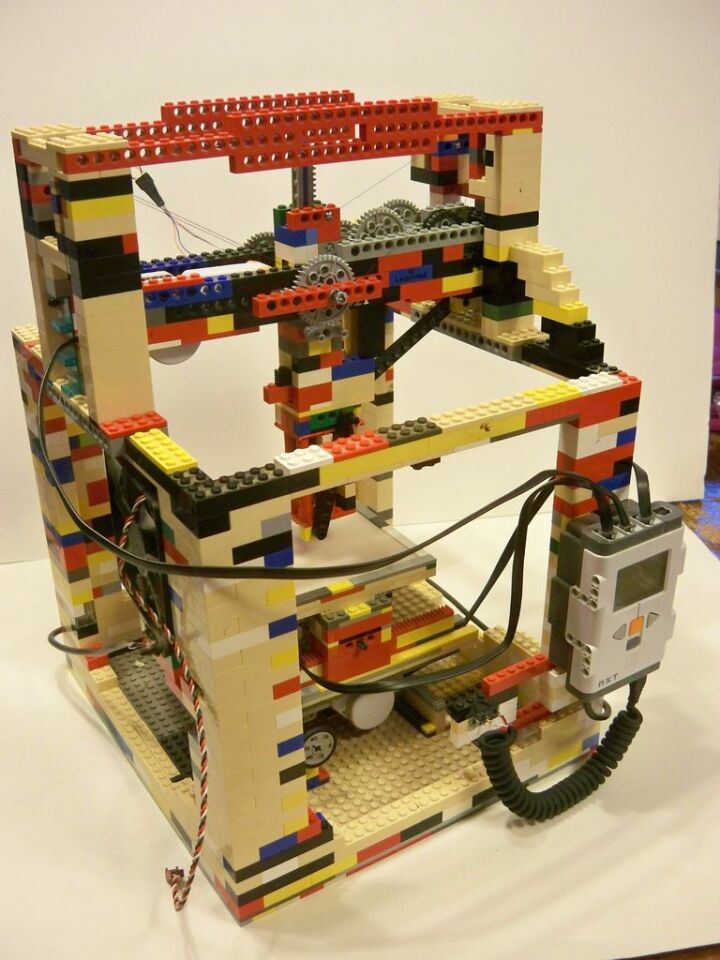As the 3D printing revolution continues, prices of 3D printers have continued to fall, with devices such as the Buccaneer 3D printer set to sell for under US$400. But even that is still too expensive for many people – students in particular. That's why Matthew Krueger, also known as matstermind at instructables.com, has created a 3D printer for next to nothing from everyone's favorite childhood toy, LEGO.
Krueger has had an obsession with 3D printing since he first came upon the original Makerbot Thing-O-Matic, but as a student, he lacked the funds to purchase a 3D printer of his own. Since his education was based in engineering, Krueger started making attempts at creating his own 3D printer with limited funds and what he had on hand. After attempts with an Arduino and parallel port, 3D printing on the cheap seemed like it would remain out of reach, but then Krueger pulled out his LEGOs and started building.
What he created is the LEGObot, an NXT-powered 3D printer that is roughly based on the original Makerbot. Instead of plastic, the LEGObot currently prints with hot glue, which although a usable medium, has a rubbery consistency that leads to a lack of practical uses.
Krueger tells Gizmag, "I am currently building a machine to recycle milk bottles into filament, based off of Lyman's designs. Once I am able to make filament, then I will try to adapt my LEGO printer to use the filament."

Krueger is currently limited to utilizing what he has on hand for production, relying on friends with 3D printers for additional parts, but for now, his extruder is made from a hot glue gun so that was the natural material of choice. "I spent a total of $0 on parts for this. I already had everything and didn't want to spend extra. I used hot glue because it was fairly cheap, but mainly because it is what I had on hand," Krueger says.
Beyond the challenges of hot glue, Krueger also had some difficulty with programming. "Due to my lack of programming skills, every move has to be manually programmed from the NXT programming software. I have yet to find a g-code interpreter for the NXT."
Usually, a 3D printer is controlled by connecting it to a computer via a g-code interpreter program that takes a 3D model (typically an .stl file) and splits it into layers that the printer can understand. These instructions are what is called g-code form, but the NXT system, used to operate the LEGObot, is not very open-source.
"I would need to completely re-write the firmware for it to accept g-code files, which is currently beyond my level of programming expertise," Krueger explains. "I recently stumbled on someone who is working on a g-code interpreter for the NXT. If he gets his interpreter working, then this will be a fully operational 3D printer."

The LEGObot also has a bit of a wobble issue on the X and Y axes, since the gear racks are 3D printed parts that don't perfectly fit to LEGOs. One of Krueger's goals as he continues to develop his LEGObot is to reduce this wobble, which would result in cleaner, more precise prints.
"I enjoy using old, unused, and recycled items in ways to reduce cost while keeping our landfills clean," Krueger says. It's clear that he is not only reducing cost while repurposing items, he is virtually eliminating the cost of creating a 3D printer for those that have some LEGOs laying around.
The video below shows the LEGObot at work.
Source: Instructables




















